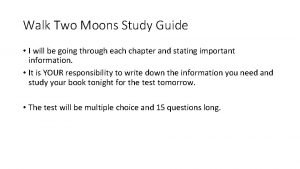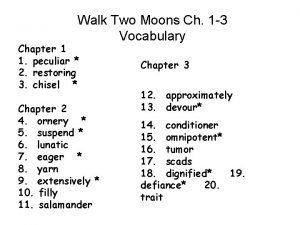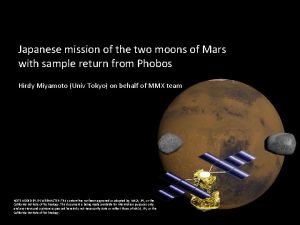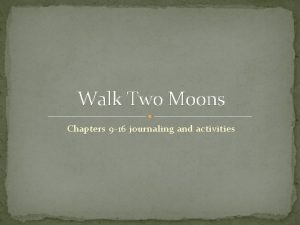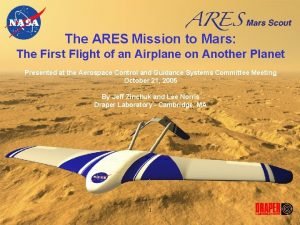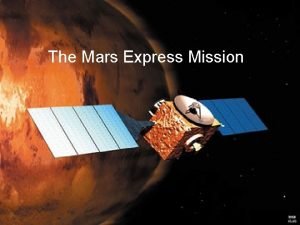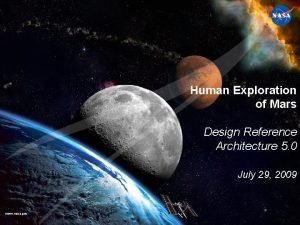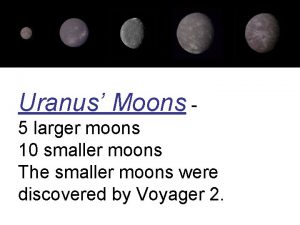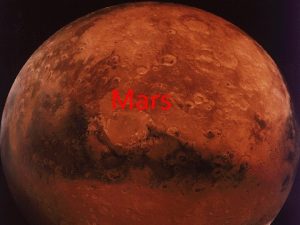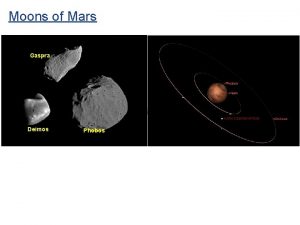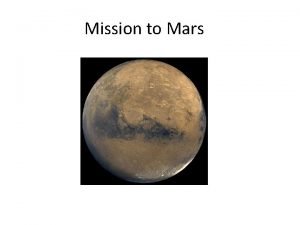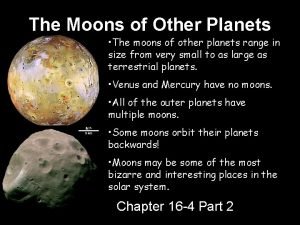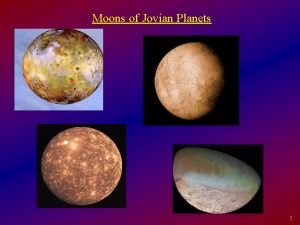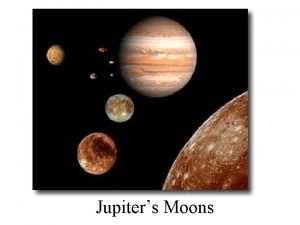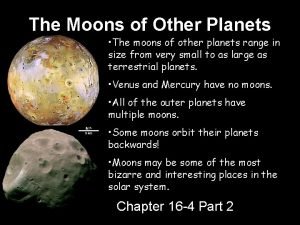Japanese mission of the two moons of Mars









- Slides: 9

Japanese mission of the two moons of Mars with sample return from Phobos Hirdy Miyamoto (Univ Tokyo) on behalf of MMX team NOTE ADDED BY JPL WEBMASTER: This content has not been approved or adopted by, NASA, JPL, or the California Institute of Technology. This document is being made available for information purposes only, and any views and opinions expressed herein do not necessarily state or reflect those of NASA, JPL, or the California Institute of Technology.

JAXA’s activity and Japanese perspective Science community of Japan is interested in understanding the birth and evolution of habitable environment in the solar system. topics • Early evolution of the solar system Hayabusa-2(C asteroid) MMX • Atmospheric evolution Hayabusa (S asteroid) Mars Moon e. Xploration • Interactions of mineral-waterorganic matter • Distributions and transportations of materials forming planet/life • Surface evolution NASA/ESA missions JAXA missions Kaguya (Moon) Akatsuki (Venus) (OSIRIS-Rex Rosetta, DAWN, New horizon, ) (Beppi. Colombo) (LRO, MER, Mars Odyssey Mars Express, Exo. Mars, MSR, Insight, Mars 2020 (Exo. Mars, TGO, Maven, JUNO) In this line, we are interested in Phobos and Demos because • They would hold keys for the sources and the delivery process of water and/or building blocks of planets into inner planets. • Understanding the initial condition of Mars-moon system should provide important inputs to the early evolutional history of terrestrial planets.

Mission objectives of MMX (Mars Moon e. Xploration) (1/3) Ø Clarify whether if the moons are captured or formed in situ after a giant impact Captured asteroid? D/C-type asteroid-like spectra Low density In situ formation after a giant impact Very low inclination and eccentricity • If captured, how materials forming Mars had been transported in the early history of the solar system? • If formed in-situ, what is the nature of a giant impact to a terrestrial planet and its impact on the early evolution of mars? • Does Deimos share its origin to Phobos? This will improve our understanding of material distributions and transports at the edge of the inner part of the early solar system as well as of planetary formations.

Mission objectives of MMX (Mars Moon e. Xploration) (2/3) ØUnderstand processes in circum-Martian environment • How the evolutions of the moons are different from asteroids? • How is the nature of circum-Martian environment in the view of Mars surface and atmospheric evolution? ØMars atmospheric observation • How are the temporal and global distributions of dust storms, ice clouds, and water vapor of Mars? These will lead to improve our views of evolutions of the moons and the environmental transition of Mars surface

Mission objectives of MMX (Mars Moon e. Xploration) (3/3) Ø Exploit astronautics and exploration capabilities, such as • Round trip to Martian system (Astronautics) • Sophisticated sample retrieval technologies (Robotics) • High rate of data transmission (Communication) QSO (Quasi-Stationary Orbit) Landing 1 hour Important for our future deep space missions

Tentative design of the MMX mission Timeline Launch Mars Arrival Mars Departure Earth Arrival Spacecraft Aug, 2022 July, 2023 May, 2026 April, 2027 Launch Mass : 3000 kg Three stages system. Return module: 1050 kg Exploration module: 150 kg Propulsion module: 1800 kg Mission Duration : 5 years These are for the case of using only a chemical propulsion system. Combination with an electric propulsion system is also discussed

In situ observation of MMX (TBD) MMX spacecraft will be in the Quasi-Stationary Orbit for 34 months. We may perform: Ø Mineralogical mapping especially for hydrous minerals (globally for Phobos, partially for Deimos) Ø Imaging for geological study, including craters, boulders, grooves, and regolith (globally for Phobos, partially for Deimos) Ø Close-up observations of Phobos for landing-site selections and descriptions Ø Observations of Phobos for understanding the internal structures especially for the presence of ice (in terms of iron flux and gravity/density measurements) Ø Mars atmospheric observations by taking the advantage of the QSO Instruments positively discussed include: l Visible color imager l Near-infrared spectrometer (2 -3. 8μm) l Gamma-ray and Neutron spectrometer (Si, Fe, Ca) l Gravity measurement l Radar sounder l Gradiometer l Lander onboard instruments l Ion flux measurement l Small rover(s)

Decent/sampling on Phobos and sample analyses on Earth Ø During the observational phase of Phobos, mineralogical/morphological mappings will be completed to determine two sampling sites Ø At least 10 g (> 1000 grains) of samples are expected to be collected Ø Sampling instrument is still under discussion, but we will try to acquire samples from at least deeper than 2 cm from the surface Ø Sampling site will be fully studied by optical instruments during the decent phase Ø Samples will be analyzed at high precision. We consider petrology, mineralogy, bulk chemistry, and isotopic compositions (especially O and Cr) can constrain origins of the samples

Summary Ø JAXA’s 3 rd sample-return mission will go to Phobos Ø The mission (MMX, Mars Moon e. Xploration) will observe Phobos, Deimos, and Mars and return samples from Phobos Ø Objectives of the MMX mission include: • Clarify whether if the moons are captured or results of a giant impact • Understand the processes/evolutions of bodies in circum-Martian environment • Exploit astronautics and exploration capability for Japanese future missions Ø The shape of the mission will be frozen in one year from now Ø The mission study, including interaction with international science community, will continue to be fully boosted towards to the launch in 2022


